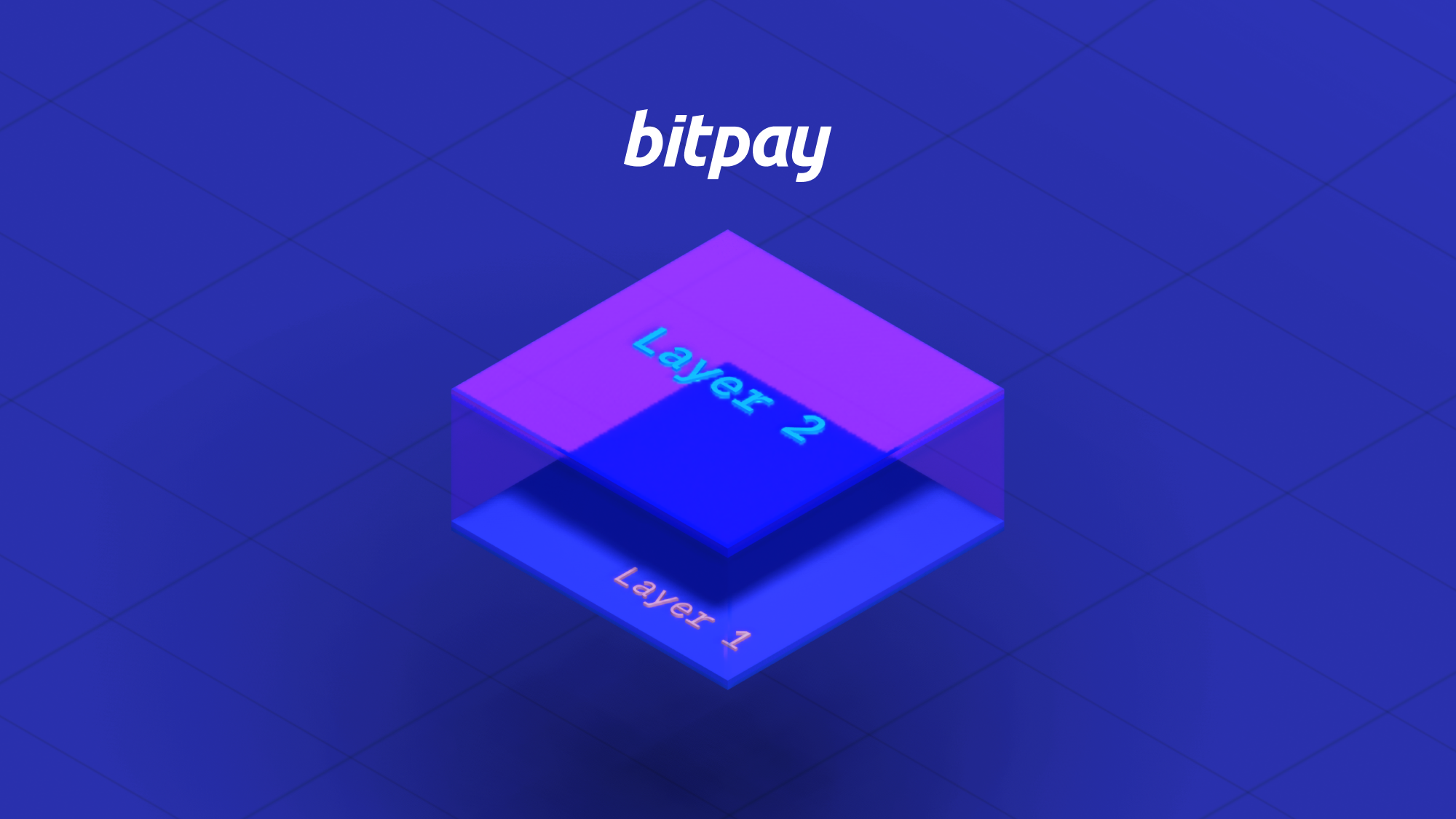The Necessary Bits
The variety of crypto customers has risen exponentially for the reason that launch of Bitcoin and Ethereum. Over time, the community visitors on these “Layer 1” blockchains has grown significantly, leading to larger charges and elevated transaction occasions. One resolution to ease community congestion and permit for extra transaction throughput is what are often known as Layer 2 networks. These third-party protocols are constructed on prime of current blockchains to bear the brunt of transaction exercise. This permits considerably extra transactions to be processed with out compromising the primary chain’s safety, improves scalability and clears a path for blockchain networks’ long-term progress.
A blockchain’s scalability refers to its capacity to accommodate an ever-increasing variety of customers and transactions. Scalability not solely determines a blockchain’s transaction velocity, however its potential for progress and widespread adoption.
As a result of transaction capability is hard-coded into these blockchain methods, their long-term progress is on the mercy of what number of transactions they will course of. Layer 2 networks tackle these points by processing transactions independently of the primary chain by means of a secondary framework. This permits congested Layer 1 blockchains to stay speedy and environment friendly, at the same time as demand skyrockets.
However what precisely are Layer 2 options? And the way do they differ from Layer 1 blockchain networks? We cowl the necessities on these and different matters straight forward.
A fast primer on blockchain layers
Layer 1 refers back to the underlying structure of a blockchain itself. Bitcoin, Litecoin and Ethereum are all examples of Layer 1 blockchains, or “mainnets”. Layer 1s are so named as a result of they’re the first networks inside their respective ecosystem. Layer 1 networks set up the parameters for a way a blockchain operates. This contains issues like which consensus mechanism the community makes use of, common block time and varied different guidelines. Layer 1 blockchains can independently confirm and finalize transactions with out the necessity for exterior networks, however transaction occasions can gradual significantly during times of excessive community visitors.
Layer 2 options are like miniature, secondary blockchains that run parallel to a Layer 1 community to enhance effectivity and scalability. These options take over a lot of the transaction processing work that will ordinarily be accomplished on the primary chain. As soon as the transactions are processed and validated on a Layer 2 community, the information are transferred to the primary chain to be completely recorded. A few of the best-known Layer 2 networks embody Ethereum-based Arbitrum and Bitcoin-based Lightning Community.
What’s a Layer 2 community?
In easiest phrases, Layer 2 options are protocols that sit atop a Layer 1 blockchain to enhance some side of its efficiency, most frequently scalability or privateness. Layer 1 networks like Bitcoin and Ethereum expertise gradual efficiency at occasions of excessive community visitors. Layer 2 options shift transaction processing work away from the primary chain till accomplished transactions are able to be recorded. This frees up vital community capability on the Layer 1 chains, making certain their continued speedy and safe operation. Layer 2 blockchains are capable of conduct transaction exercise a lot sooner as a result of they’re engineered for max scalability, versus decentralization and safety being the precedence for Layer 1 chains.
A typical subject with Layer 1 networks is their poor scalability, which we’ve seen with Bitcoin and different main blockchains as their consumer load has elevated. A significant a part of Layer 1 blockchain safety is their immutability, or the shortcoming to switch them. Whereas that is important for shielding customers from would-be scammers and thieves, it makes implementing sure adjustments to a Layer 1 community’s performance just about not possible.
Advantages of Layer 2 options
Layer 2 options play an necessary function on this planet of cryptocurrency, making transactions sooner and cheaper whereas addressing main blockchains’ greatest limitations. As Layer 1 networks develop into much less congested by means of using Layer 2 options, their scalability improves, which permits them to accommodate extra customers with out community slowdowns.
Layer 2 networks’ emphasis on scalability allows them to carry out hundreds of transactions per second. This permits Layer 1 blockchains to vastly enhance their transaction throughput with out modifying their development or compromising their safety or decentralization. Bitcoin, for instance, is simply able to processing roughly 7 transactions per second (TPS). Against this, Lightning Community, the preferred second-layer protocol for Bitcoin, can theoretically course of as many as 1 million transactions per second. Since BitPay started its help for the layer 2 platform, Lightning Community funds processed by BitPay rose over 200%.
How Layer 2 scaling options work
Transactions carried out by way of the Layer 2 community are consolidated then broadcasted to the mainnet, moderately than broadcasted 1 by 1. By sparing the mainnet a lot of the computation-heavy validation work, Layer 1 blockchains are capable of scale extra successfully. Extra particular particulars about how data is packaged and transferred between L2 and L1 networks will fluctuate based mostly on the precise sort of L2 in use.
Forms of Layer 2 options
There are a number of totally different classes of Layer 2 networks, together with state channels and rollups. And whereas the way in which they’re applied and the way they operate fluctuate, all of them serve the aim of offering customers with a low-cost, sooner various to transacting on the L1, however with comparable safety advantages as utilizing the L1.
State channels
State channels permit two or extra folks to conduct a number of off-chain transactions with out broadcasting them to your entire community. This spares main blockchain networks from numerous resource-intensive processing work. It has the impact of liberating up community capability, lowering transaction charges and enabling on the spot settlement. The Lightning Community, constructed upon the Bitcoin blockchain, is an instance of a state channel Layer 2 protocol.
Rollups
Rollups are methods that course of transactions on a Layer 2 blockchain earlier than porting them again to the primary chain, lowering transaction prices. In rollups, transactions are bundled collectively, generally hundreds at a time, and recorded on the Layer 2 chain earlier than being “rolled up” right into a single transaction. That transaction is then fed to the slower, costlier mainnet for recording, splitting the price of a single transaction throughout many customers.
There are two major varieties of rollups: Optimistic rollups and zero-knowledge rollups (or ZK-rollups)
Optimistic rollups permit Ethereum customers to execute sensible contracts outdoors the mainnet with out broadcasting each transaction again to your entire community. Because the identify implies, optimistic rollups assume all off-chain transactions are legitimate. As soon as every batch of rollups is submitted to the mainnet, there’s a “problem interval”, normally 7 days lengthy, throughout which any consumer can problem a rollup transaction by means of what is named a fraud proof. If the proof finds the transaction was incorrectly carried out, the rollup executes the transaction once more with the corrected data. If the fraud proof fails and there are not any different challenges, the bundle of transactions is completely recorded on Ethereum after the 7-day window. Some examples of optimistic rollups embody Arbitrum, Optimism and Boba.
Zero-knowledge rollups, or ZK rollups, enhance transaction throughput by processing hundreds of transactions per second whereas solely publishing primary abstract knowledge to the mainnet. ZK rollups validate transactions by producing cryptographic proofs often known as validity proofs. With zero-knowledge rollups, interactions between chains are ruled by sensible contracts. As soon as customers signal a bundle of transactions, a 3rd social gathering often known as a “prover” verifies them earlier than including them to the processing queue. At periodic intervals, provers batch up hundreds of queued transactions to generate what is named a zero-knowledge proof. It is a temporary and particular piece of knowledge which will be verified nearly instantaneously with none extra transaction data. The prover then submits their proof to the mainnet, which a wise contract then verifies and information. Some examples of ZK rollups embody StarkWare, zkSync and zkPorter.
A be aware on sidechains and validiums
Sidechains are impartial blockchains that intently align with a essential chain, permitting varied interactions between the layers. Sidechains permit sure digital belongings to be transferred between totally different blockchain networks, enabling better interactivity and compatibility throughout chains. The first downside of sidechains, nevertheless, is that they don’t seem to be lined by the safety equipment of its mother or father Layer 1 chain. This requires them to conduct their very own safety, utilizing both proof-of-work or proof-of-stake consensus. A well known instance of a sidechain is Bitcoin’s Liquid Community, or Polygon (MATIC) for Ethereum.
Validiums are a sort of scaling resolution designed to enhance throughput by processing transactions off the Ethereum mainnet. Much like ZK rollups, validiums make the most of zero-knowledge proofs to confirm these transactions with out storing any transaction knowledge on the mainnet. Validiums are able to processing as much as 9,000 transactions per second, in comparison with Ethereum’s common of round 30 TPS.
Wrap up on Layer 2 networks in crypto
Because the variety of crypto customers worldwide continues to develop, the preferred cryptocurrency networks have confronted scalability challenges as they wrestle to maintain up with the spikes in demand. Left unaddressed, these challenges threaten the long run progress of the most important blockchain ecosystems. Layer 2 options permit mainnets to successfully outsource a lot of the transaction processing work to extra scalable networks. The rerouting of community visitors ensures sooner transaction speeds, decrease charges, and permits for better scalability.

